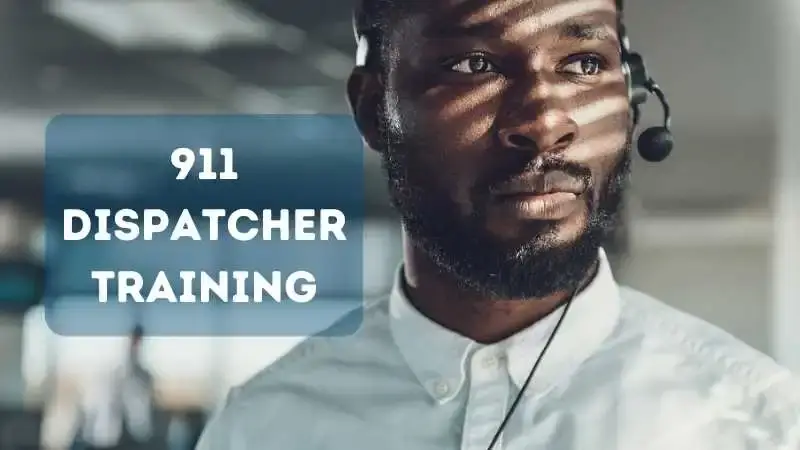Becoming a 911 dispatcher is more challenging than one might think. The training process is rigorous and demanding, but it is also necessary in order to provide the best possible service to those who need it. In this article, we will take a closer look at what the training program involves and what is required of those who wish to become dispatchers.
After clearing the Criticall Test, you will move on to a training program. This program is designed to give those who wish to become dispatchers the skills they need to respond quickly and effectively to emergency calls. The program includes both classroom and hands-on training and examinations that test the individual’s knowledge of regulations and procedures.

NENA, otherwise known as the National Emergency Number Association, employs a specific training process for its recruits. This is what that entails:
Training Introduction
This section covers the basics of public safety communications, including call processing and call-taker responsibilities.
- Introduction: A brief overview of the responsibilities and role of 911 dispatchers.
- 911’s Mission & Key Terms: A review of the 911 mission and terminology used by dispatchers.
- The Public-Safety Team: An overview of the public-safety team and the role of each member.
- Personal Conduct Guidelines: A review of the rules and regulations that dispatchers must follow.
- Governance: A discussion of the policy and procedures that govern the 911 dispatch center.
- Field Responders: An overview of the people and teams who respond to emergency calls.
Personal Safety, Health, and Wellness
A discussion of methods for protecting oneself from danger and maintaining a healthy lifestyle.
- The identification, definition, and causes of stressors: An examination of the common stressors experienced by dispatchers and strategies to cope with them.
- Ways to Alleviate Stress: A review of ways to manage stress and maintain physical and mental health.
- Maintaining Your Mental Health in the Face of Trauma: A review of strategies to help dispatchers manage the trauma they may encounter while on shift.
Legal Terms and Their Meanings
A review of legal terms and their meanings.
- Liability: A discussion of what liabilities dispatchers may be held to by their superiors and how they can limit those liabilities.
- Negligence: An overview of what constitutes negligence and the various defences available in such cases.
- Documentation: A review of documentation requirements, including incident reports and other forms.
- Law-Enforcement-Specific Laws: An overview of laws specific to law enforcement and how they can affect dispatch operations.
- Fire/Rescue/EMS-Specific Laws: An overview of laws specific to fire and rescue operations and how they can affect dispatch operations.
Technology for emergency communications
A review of the technologies used in dispatch operations and their advantages and disadvantages.
- Telephony Technologies: An overview of the different types of telephony technologies used in dispatch operations.
- Next Generation 9-1-1: A discussion of the latest technologies for emergency communications, such as Voice over Internet Protocol (VoIP) and text-to-911.
- Computer-Aided Dispatch (CAD) Systems: An overview of the different types of CAD systems used in dispatch operations.
- Support Systems: A review of the systems used in support operations, such as automatic vehicle location (AVL) and geographic information systems (GIS).
- Security Breaches & Cybersecurity Threats: A discussion of security breaches and cybersecurity threats in dispatch operations.
- Radio Systems: An overview of the different types of radio systems used in public safety communications.
Communicating with others
A review of the different techniques used to communicate among other dispatchers & agencies.
- Communication Techniques: An overview of the techniques and protocols used to communicate with other dispatchers & agencies.
- Customer Service: A discussion of the importance of good customer service and dealing with difficult calls.
- Problem-Solving & Critical Thinking: A review of techniques for effectively resolving dispatch problems.
Processing telephone calls
An examination of the processes and procedures for handling telephone calls.
- Call Receiving: An overview of the techniques used for receiving and classifying calls.
- Callers with Disabilities & Special Needs: A discussion of the considerations for dealing with callers who have disabilities or special needs.
- Call Categorization & Prioritization: An overview of techniques used for categorizing and prioritizing calls.
- Data Entry & Call Documentation: A review of techniques for entering data and documenting calls.
- Fire-Service Overview: A discussion of the fire service’s organization and operations.
- EMS Overview: An overview of the EMS system, its organization and operations.
- Law-Enforcement Overview: A discussion of the law-enforcement system, its organization and operations.
- Low-Frequency/High-Consequence Calls: A review of the special considerations for handling calls with potentially serious consequences.
Crisis Management
A discussion of strategies for dealing with crisis situations.
- Nationwide Suspicious Activity Reporting (SAR) Initiative (NSI): An overview of the NSI and its components.
- Tactical Dispatching: A review of techniques for tactically dispatching resources to incidents.
- Introduction to the Incident Command System (ICS 100): An introduction to the ICS 100 and its components.
- Crisis Negotiation: A review of techniques for negotiating with callers in crisis situations.
- Emergency Management & Response: A discussion of the principles and processes for managing emergency incidents.
- An Introduction to the National Incident Management System (NIMS 700): An overview of the NIMS 700 and its components.
- Disaster Preparedness: A review of techniques for preparing for disasters.
- Mutual Aid & the National Joint TERT Initiative (NJTI): A discussion of the Mutual Aid system and the NJTI.
Quality Control
An overview of techniques used to evaluate and improve dispatch operations.
- Quality Assurance (QA):A review of techniques for evaluating and improving the quality of dispatch operations.
- Auditing & Performance Measurement: A discussion of techniques for auditing dispatch operations and measuring their performance.
- Resource Management: An overview of techniques for managing resources during dispatch operations.
- Cultural Considerations & Diversity: A discussion of cultural considerations and diversity in the dispatch center.
- Professionalism & Ethics: An overview of professionalism and ethical considerations in dispatch operations.
- Quality Improvement (QI): A review of techniques for improving the quality of dispatch operations.
Conclusion
At the conclusion of the training process, 911 dispatchers will have a comprehensive understanding of the complexities and nuances of their job. They will be equipped with the knowledge and skills to handle calls effectively and provide a high level of service to the public.
They will also better understand the national initiatives and protocols related to emergency dispatching. 911 dispatch schools are designed to ensure that all students receive the necessary training, education, and experience required to become successful dispatchers.
With the proper training and dedication, 911 dispatchers can be valuable assets to their communities. They provide an essential service and help save lives. With the right knowledge, skills, and dedication to their job, 911 dispatchers can become valuable to any community.
